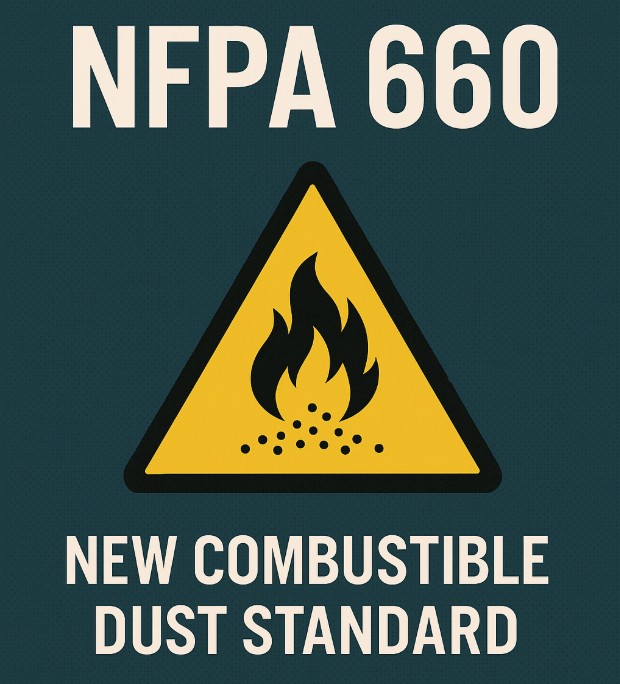
Combustible dust hazards have long been a serious concern for industrial facilities. In 2024, the National Fire Protection Association (NFPA) released NFPA 660, a unified standard that consolidates multiple combustible dust guidelines into one. For facility managers, engineers, and procurement leaders, understanding this new standard is essential for compliance and safety.
What is NFPA 660?
NFPA 660 is a comprehensive standard that brings together six previously separate combustible dust standards into a single framework. Instead of referencing multiple documents, facility managers now have one source to guide dust hazard analysis, system design, and compliance strategies.
Why the New Standard Matters
The primary goal of NFPA 660 is consistency. Combustible dust hazards span industries from food processing to metalworking, and confusion over multiple standards often created compliance gaps. With NFPA 660, requirements are streamlined so facilities can more easily:
- Identify dust-related hazards
- Standardize protection measures
- Meet OSHA’s General Duty Clause expectations
- Reduce the risk of catastrophic explosions or fires
Key Requirements in NFPA 660
Facilities should be aware of several critical requirements:
- Dust Hazard Analysis (DHA): Every facility must undergo dust testing, as well as conduct and document a DHA to assess risks. Updates are required every five years or when processes change.
- Deflagration Venting and Isolation: Proper venting, explosion isolation, and suppression systems must be in place to prevent propagation.
- Housekeeping and Maintenance: Facilities must maintain dust levels below hazardous concentrations and implement effective cleaning procedures.
- Management of Change: Any modification to equipment or processes requires review to ensure combustible dust safety isn’t compromised.
Impact on Facilities and Operations
For many plants, compliance with NFPA 660 may require updated equipment, revised housekeeping protocols, or new training programs. While this can feel overwhelming, it also provides an opportunity to:
- Strengthen safety culture
- Reduce unplanned downtime caused by dust-related issues
- Avoid costly fines or liability from non-compliance
Steps Facilities Should Take Now
To prepare for NFPA 660, facility leaders should:
- Review current combustible dust safety measures.
- Conduct dust testing or update a Dust Hazard Analysis.
- Verify that ventilation, collection, and suppression systems meet new requirements.
- Train staff on updated safety and housekeeping practices.
- Partner with trusted vendors who can help with compliance and system upgrades.
How Glacier Technology Can Help
Navigating NFPA 660 doesn’t have to be stressful. Glacier Technology provides dust, mist, and fume collection systems designed to meet stringent compliance requirements while keeping operations efficient. Our team helps you select the best explosion and fire mitigation accessories to optimize the safety of your system, including proactive and reactive combustible dust solutions.
Whether you need a system audit, updated equipment, or guidance on dust hazard mitigation, our team has the expertise to help your facility stay safe, compliant, and productive. Contact us today.
